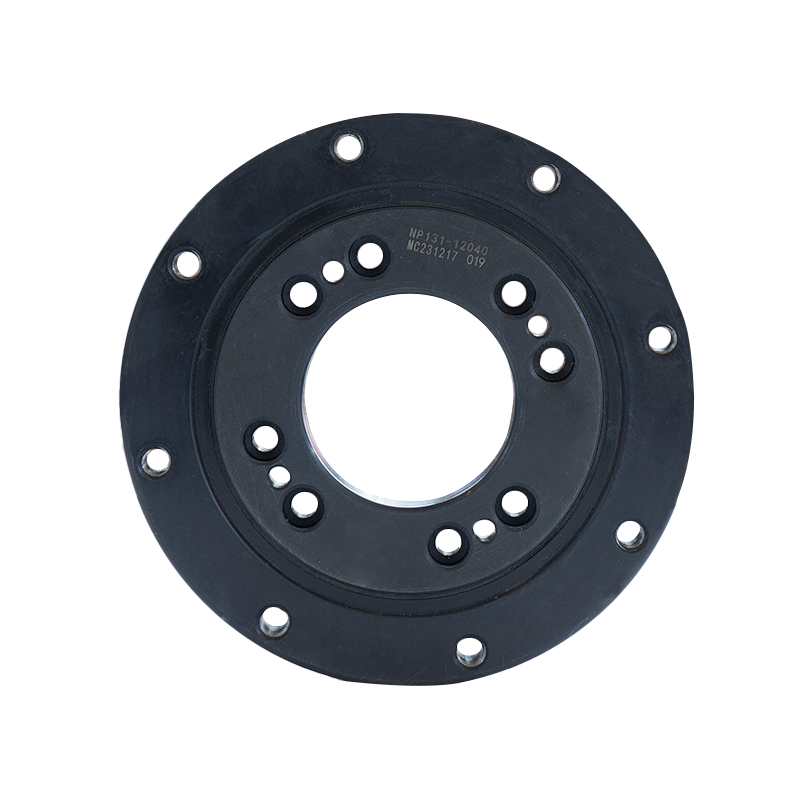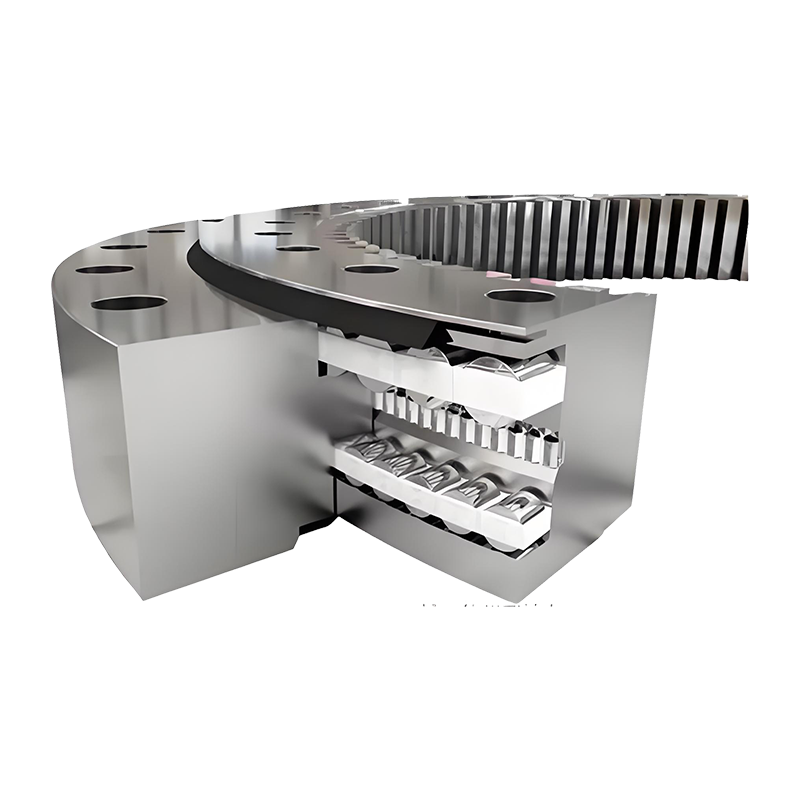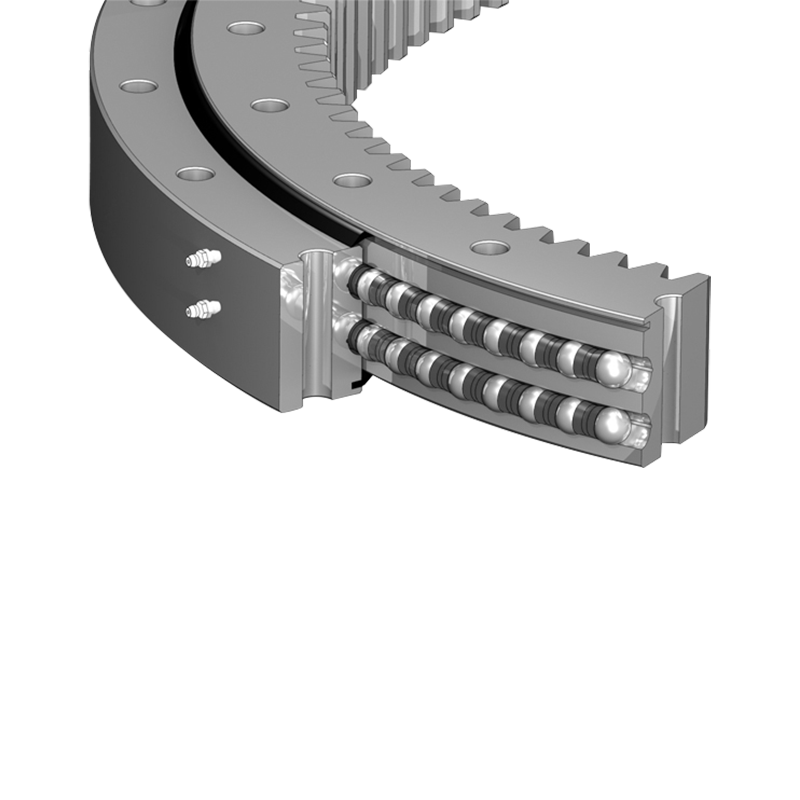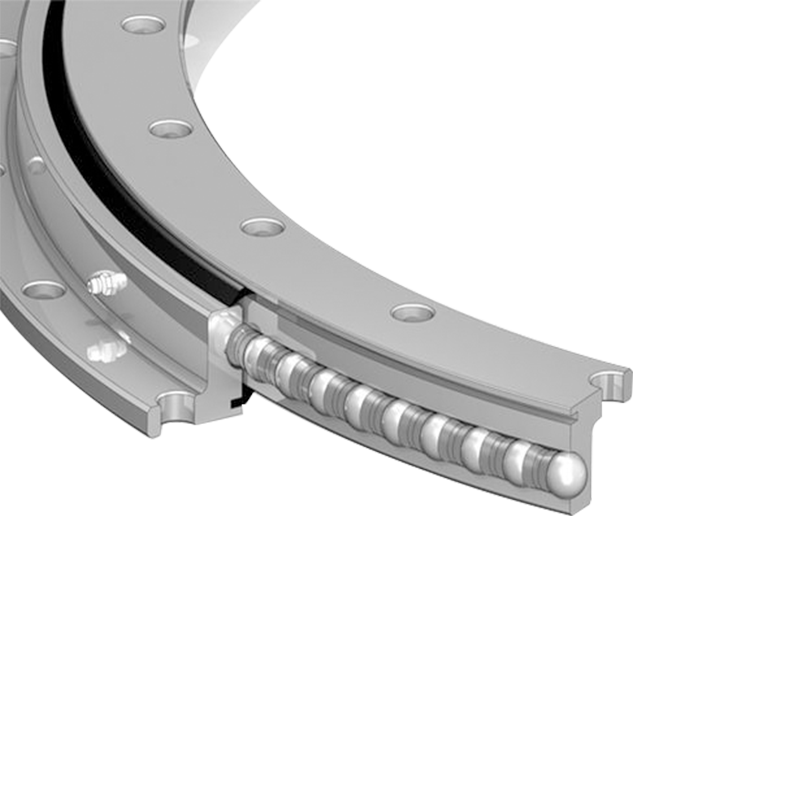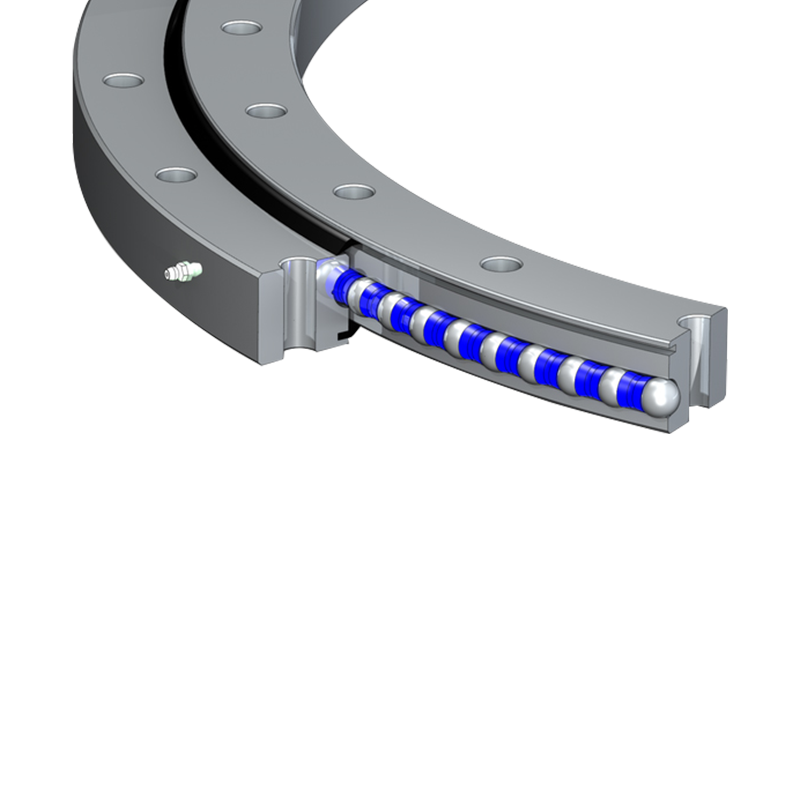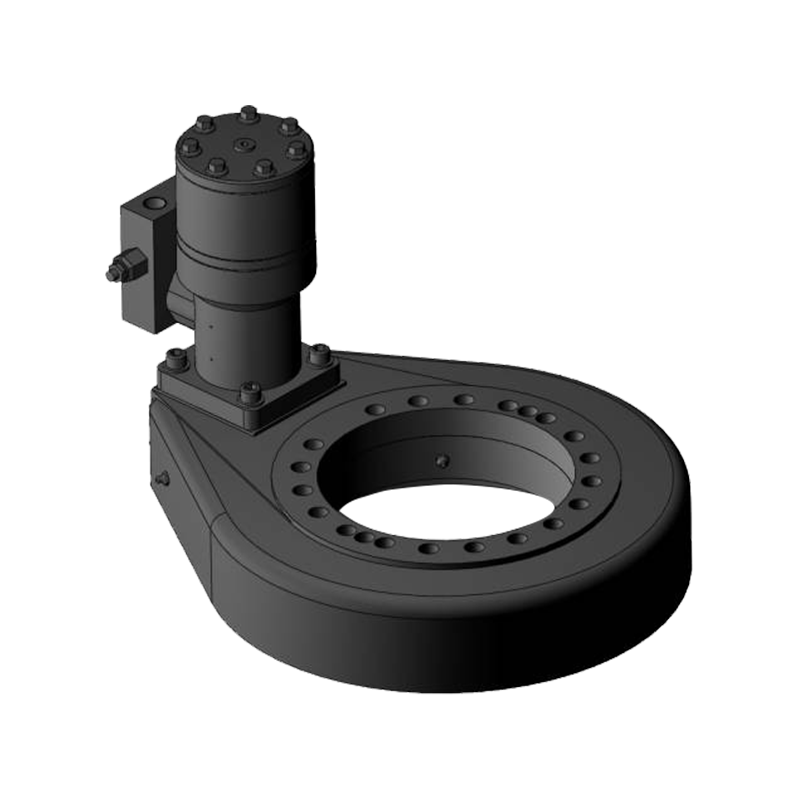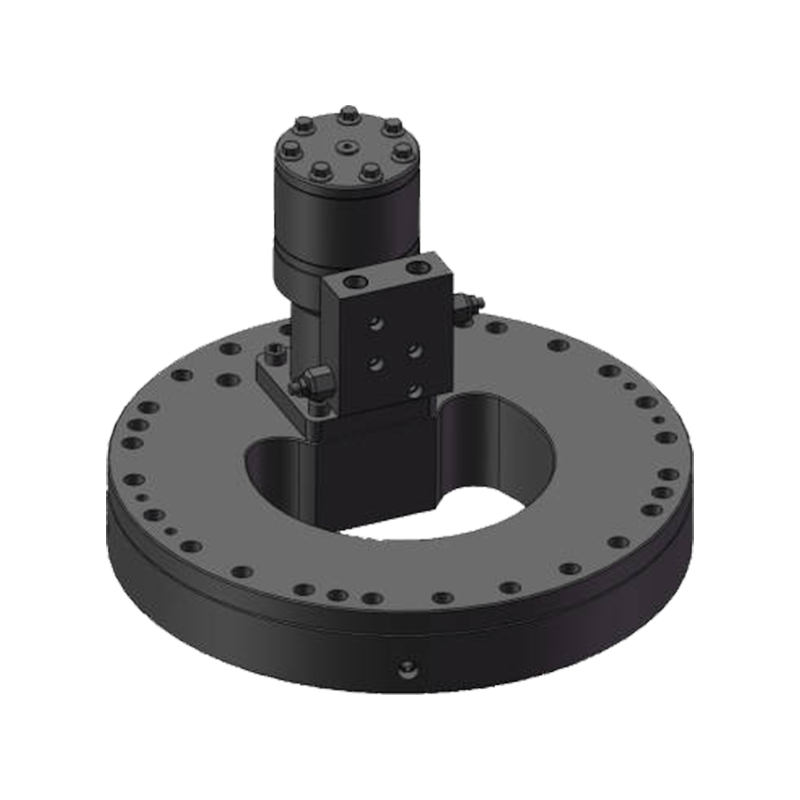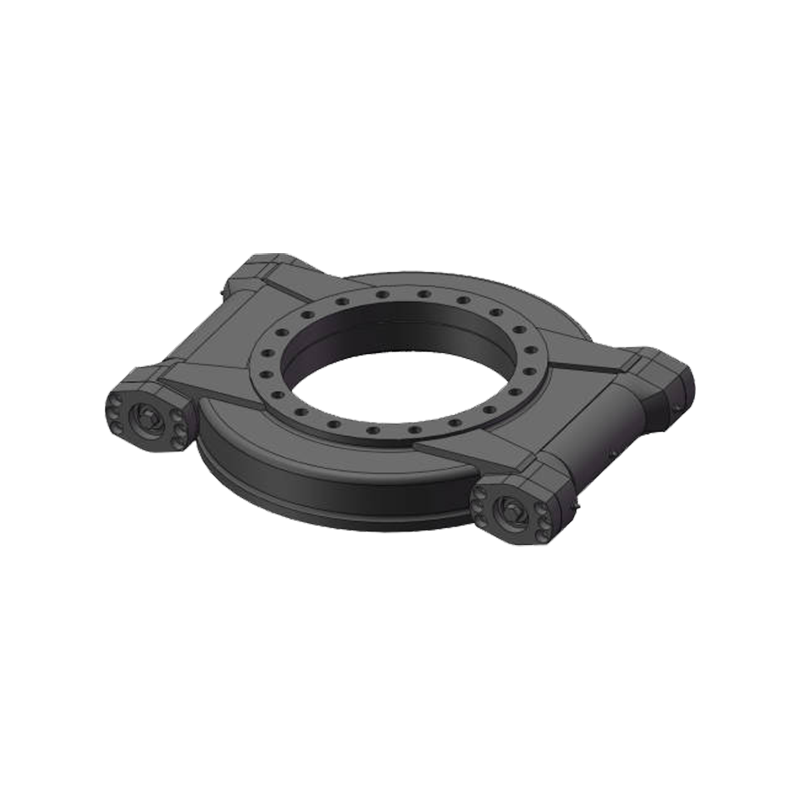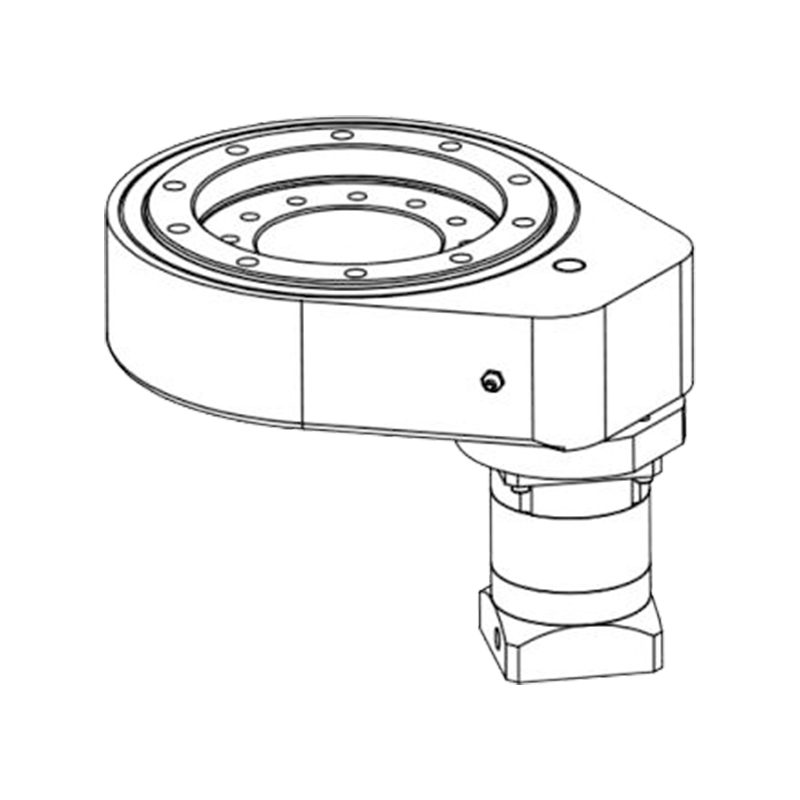What Materials and Surface Treatments Improve the Durability of Horizontal Slewing Drives
 2025.10.09
2025.10.09
 Industry news
Industry news
Horizontal slewing drives are critical mechanical components that convert rotational movement into precise angular motion, often used in solar tracking systems, construction machinery, industrial automation, and material handling equipment. These devices are designed to withstand heavy loads, variable weather conditions, and continuous operation. To maintain long service life and reliable performance, both the materials selected and the surface treatments applied play vital roles in the durability of horizontal slewing drives.
1. Structural Materials for Load-Bearing Strength
The core structure of a horizontal slewing drive is typically made from high-strength alloy steels such as 42CrMo or 50Mn. These materials are known for their superior tensile strength, fatigue resistance, and hardness, which are essential for withstanding high torque and axial loads. The use of such steels also helps resist deformation during long-term operation, maintaining the accuracy of rotational motion.
In some lightweight or corrosion-sensitive applications, ductile iron or carbon steel with reinforced treatments is used for the housing. These materials offer good machinability while providing adequate mechanical strength for moderate load conditions.
2. Gear Materials for Wear Resistance and Smooth Transmission
The worm and gear set is the heart of a slewing drive’s motion system. The worm is commonly made from hardened steel to achieve superior wear resistance and surface hardness. The matching gear, often manufactured from high-quality bronze or brass alloys, provides excellent compatibility with the steel worm, reducing friction and preventing galling during operation. The combination of hard steel and self-lubricating bronze ensures a balance of smooth transmission, reduced wear, and extended service life.
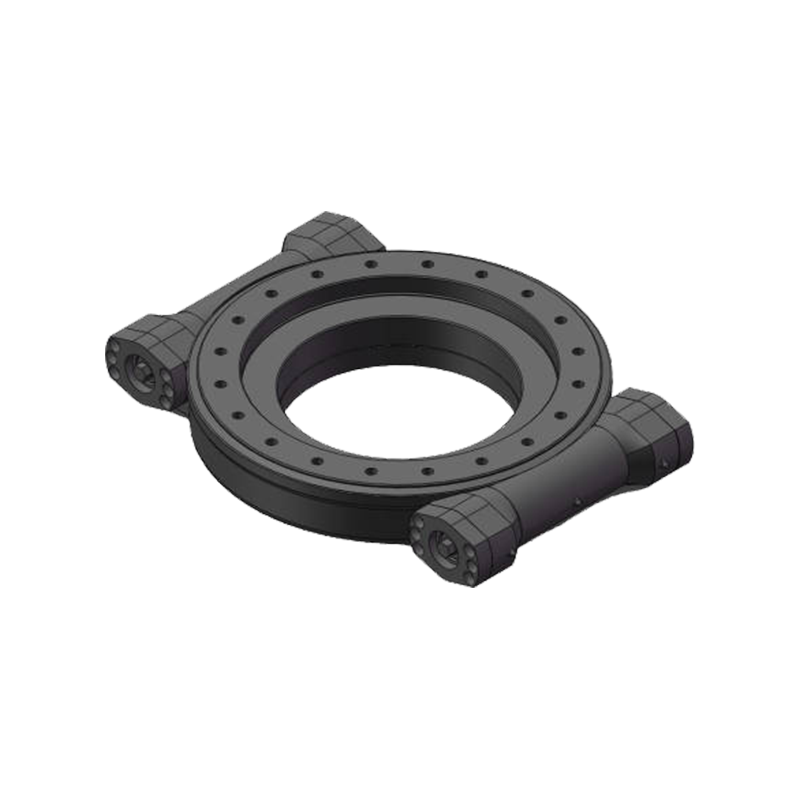
3. Surface Hardening Treatments for Critical Components
Surface treatments significantly enhance the wear resistance and fatigue life of key components. Processes such as carburizing, nitriding, and induction hardening are widely used to improve the hardness of gear teeth and bearing races.
- Carburizing introduces carbon into the surface layer of steel, producing a hard, wear-resistant outer shell while maintaining a tough core.
- Nitriding forms a nitride layer that provides exceptional resistance to abrasion and fatigue without requiring additional quenching.
- Induction hardening selectively strengthens high-stress areas, particularly gear teeth and bearing contact surfaces, improving durability under dynamic loads.
4. Corrosion Protection and Surface Coatings
Since horizontal slewing drives are often exposed to outdoor environments—such as solar trackers or wind energy systems—corrosion protection is critical. Common protective coatings include zinc plating, phosphating, and epoxy powder coating. These treatments create a barrier layer that prevents oxidation and moisture intrusion.
For marine or highly humid environments, nickel-chromium plating or electroless nickel coating offers enhanced corrosion resistance. In addition, black oxide treatment may be applied to steel parts to provide mild corrosion protection while improving the aesthetic appearance and reducing light reflection.
5. Housing Material and Sealing Design for Environmental Protection
The housing of a horizontal slewing drive is often fabricated from cast steel or cast iron with surface coatings to resist environmental wear. Some manufacturers employ powder-coated aluminum housings for lightweight designs used in automated machinery. To complement the coatings, advanced sealing systems—such as multi-lip rubber seals or labyrinth seals—are integrated to block dust, water, and contaminants from entering the drive assembly, thereby preserving internal lubrication and extending operational life.
6. Lubrication and Surface Finishing Synergy
Proper lubrication works in tandem with material hardness and coating treatments to minimize wear and friction. Polished surfaces on gear teeth and bearing races help maintain consistent oil film thickness and reduce the risk of pitting or scoring. The smoother surface finish achieved through precision grinding or honing also contributes to noise reduction and stable torque output during continuous operation.
7. Advancements in Coating Technology
Modern manufacturing has introduced advanced coating solutions such as PVD (Physical Vapor Deposition) and ceramic-based coatings, which provide both mechanical strength and corrosion protection. These thin-film coatings exhibit excellent adhesion, heat resistance, and low friction, making them suitable for high-performance slewing drives used in demanding industrial environments.
Conclusion
The durability of a horizontal slewing drive depends on the synergy between strong base materials, precise heat treatments, and effective surface protection. High-strength alloy steels, hardened gears, and corrosion-resistant coatings collectively enable the drive to operate reliably under mechanical stress and environmental exposure. As technology advances, innovative surface treatments and material enhancements continue to push the boundaries of performance, ensuring that horizontal slewing drives remain efficient, long-lasting, and capable of meeting the rigorous demands of modern engineering applications.



